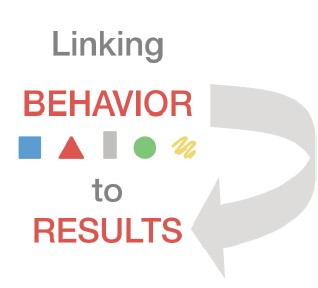Throughout my career I have always been curious as to how traits and behaviors play a role in bottom-line results. Whether it's about employee engagement, retention, or sales, I find it fascinating to determine how we can influence measurable outcomes by things within our control, starting with our facial expressions, body movement, and physical gestures.
Although I have never needed a spreadsheet to know that customer service excellence can increase profit, or that the "welcome" sets the tone for the entire event, I recognize the fact that if you want buy-in from others, especially at work, you must quantify behavior and link that behavior to results.

Years ago there was a customer service survey conducted by SkillPath. It determined that the main reason retail stores lose their customers is because of "indifference." Specifically, the survey cited that 68% of customers who did not return said it was because the store staff was "indifferent" to their needs. Respondents went on to say they did not feel welcome, comfortable, important, or understood.
I think this kind of reasoning can be applied to many things. Of course most people have to return to work, home, or school regardless of how their needs are met (or not met), but it might explain why they don't want to return, or why they become disengaged.
If you want to raise the probability you communicate effectively at work and at home, a little dose of "Circle" goes a long way and it can be communicated within seconds without saying a word. Although you can't assume every Shape is made to feel welcome the same way (because they don't), it's safe to say that most people are aware and formulate opinions about a person starting with what they see, specifically facial expressions.
The Circle is the way we connect with people. A "touch of Circle" can be demonstrated in the following ways within just seconds.
- a smile
- an affirmative head nod
- raising your eyebrows to show excitement or interest
- eye contact with a smile
- an open-hand gesture
- standing up or leaning in
If you're not in the same room with someone or it's an audio call, what people hear (and don't hear) is just as important as what people see (and don't see). Consider your tone of voice, pace, and pitch. If you are in a hurry, is your pace also hurried? What about your voice? Can others "hear" you smiling?
Try saying hello without smiling. Now try it again smiling. Do you notice a difference? Most people can "hear" a smile or can sense the absence of a smile. They can also hear whether or not you are busy, annoyed, or truly delighted to hear from them.
I once worked with a healthcare company, and one of the senior level doctors approached me, sharing his disappointment that the company was placing such a large emphasis on how the patient feels about their doctor.
Patient survey results indicated that this doctor didn't care about his patients. After shadowing him one day, I could understand why. When a patient came into his office, complaining of pain, nausea, or other symptoms of sickness, the doctor's facial expression remained blank and his first response was to write down what he was hearing, rarely making eye contact with the patient. He would then make a determination as to what was causing the problem and would offer a solution, and nine times of out 10, he was not only accurate in his diagnosis but the patient reported feeling better within days of their doctor's visit. And yet, these same patients gave the doctor a low rating for caring about them when completing their patient survey.
You can't control what others think, but you can raise the probability that their needs are met within seconds. No need for "Dr. Box" to over-correct. Just add a dose of "Circle."
What would a dose of "Circle" look like from the doctor to the patient?
It could be as simple as the doctor lifting his head, making eye contact, and giving the patient a caring but reassuring smile, "You're in the right place. Let me get some information so I can help you get better."
How might this change the patient survey results for this doctor? I can tell you first-hand this doctor's scores increased, and patients changed their perception of the doctor from "doesn't care" to "demonstrated that he cares."
Now think about your life.
Where might you need to add a dose of "Circle" in your interactions with others? It could be someone at work or someone at home. What would that look like?
If you want to change results, try changing just a little bit of your behavior. Little is big, and a dose of "Circle" goes a long way.
 The Shape of Connection - "I care."
The Shape of Connection - "I care."
Just remember, each Shape shows care through their primary or secondary Shape, but everyone can learn to Shape Flex and use the Circle in a universal way.
If you want to learn more about PsychoGeometrics, including our online DIY modules, upcoming certification online classes, our new book, or how we can customize a team-building workshop for your group, feel free to reach out to me directly. Our team truly loves helping people leverage their Shapes for effective and influential communication!
Susan Hite, CEO, PsychoGeometrics, The Science of Behavior - The Art of Communication
susanhite@psychogeometrics.com

